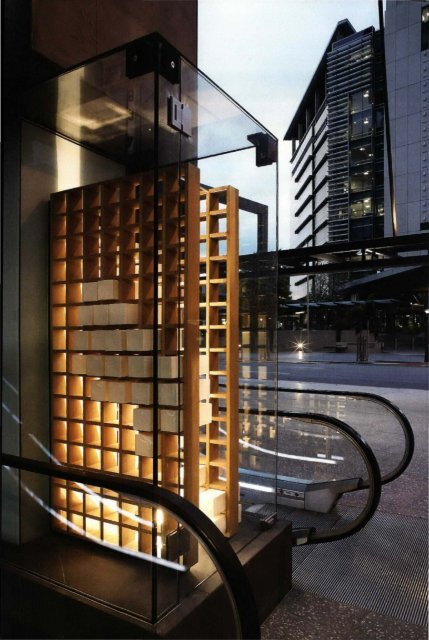The Journal of Australian Ceramics Vol 49 No 3 November 2010
Create successful ePaper yourself
Turn your PDF publications into a flip-book with our unique Google optimized e-Paper software.
left and opposite page: Kenji Uranishi, Stredm , 2009<br />
Ipswk h Courthouse, level 4 public corridor, four ceramic installations<br />
Photos: Florian Groehn<br />
Moving in and out<br />
Louise Martin-Chew exa mines the recent work <strong>of</strong> Kenji Uranishi<br />
<strong>The</strong> best public art becomes a true intervention in a space. While this seems obvious, the ability <strong>of</strong><br />
sculpture to change the understanding or experience <strong>of</strong> the viewer - physically, mentally, conceptually -<br />
is its greatest gift<br />
Kenji Uranishi's focus is on physical and conceptual intervention, and while working as a ceramic<br />
artist in Japan he made many installations. This understanding <strong>of</strong> working in a larger space assisted his<br />
commission for Ipswich Court House (iCH) artwork. After training in Japan in the mid-'90s, he arrived in<br />
Australia to live in 2004. This ICH commission was awarded in 2007.<br />
<strong>The</strong> concept for this public building in a city outside Brisbane reflects his interest in his new local<br />
environment and its histories. He describes his idea for Stream as stemming from the impact <strong>of</strong> a stone<br />
in a body <strong>of</strong> moving water "<strong>The</strong> stone will sit on the river bed and create a different flow. It attracts<br />
rocks, detritus and leaves, and over time changes the river's shape. From small things, large things<br />
grow." This concept is an apt one for a regional city beside a river as Ipswich is. <strong>The</strong>re is also reference<br />
to the gathering <strong>of</strong> people in groups, and the presence <strong>of</strong> the sculpture itself within the building.<br />
Uranishi's three works, located in public areas <strong>of</strong> the court house, are constructed in glass boxes,<br />
"windows into part <strong>of</strong> a stream " . <strong>The</strong>ir impact is cumulative. <strong>The</strong> largest work is situated in the waiting<br />
area and is a series <strong>of</strong> circular forms, using cell-like components. <strong>The</strong>y sit on their edges, like wheels, in<br />
varying sizes, visually gathering together - for strength, solidarity, sociability.<br />
<strong>The</strong> second is in a smaller, glassed-in cube, with a series <strong>of</strong> free-form slabs standing on their ends.<br />
<strong>The</strong>y are organic, s<strong>of</strong>tly curving around each other as though one has shaped the other - it is a building<br />
as forest <strong>The</strong> third work lies conceptually between the first two, a cell-like structure <strong>of</strong> rectangles<br />
broken into curved part circles. <strong>The</strong>y lie grouped on top <strong>of</strong> each other, again alluding to the solidarity <strong>of</strong><br />
like objects and the way that, put together, these things become closer in form.<br />
34 THE JOURNAL OF AUSTRALIAN CERAMICS NOVEMBER <strong>2010</strong>


















